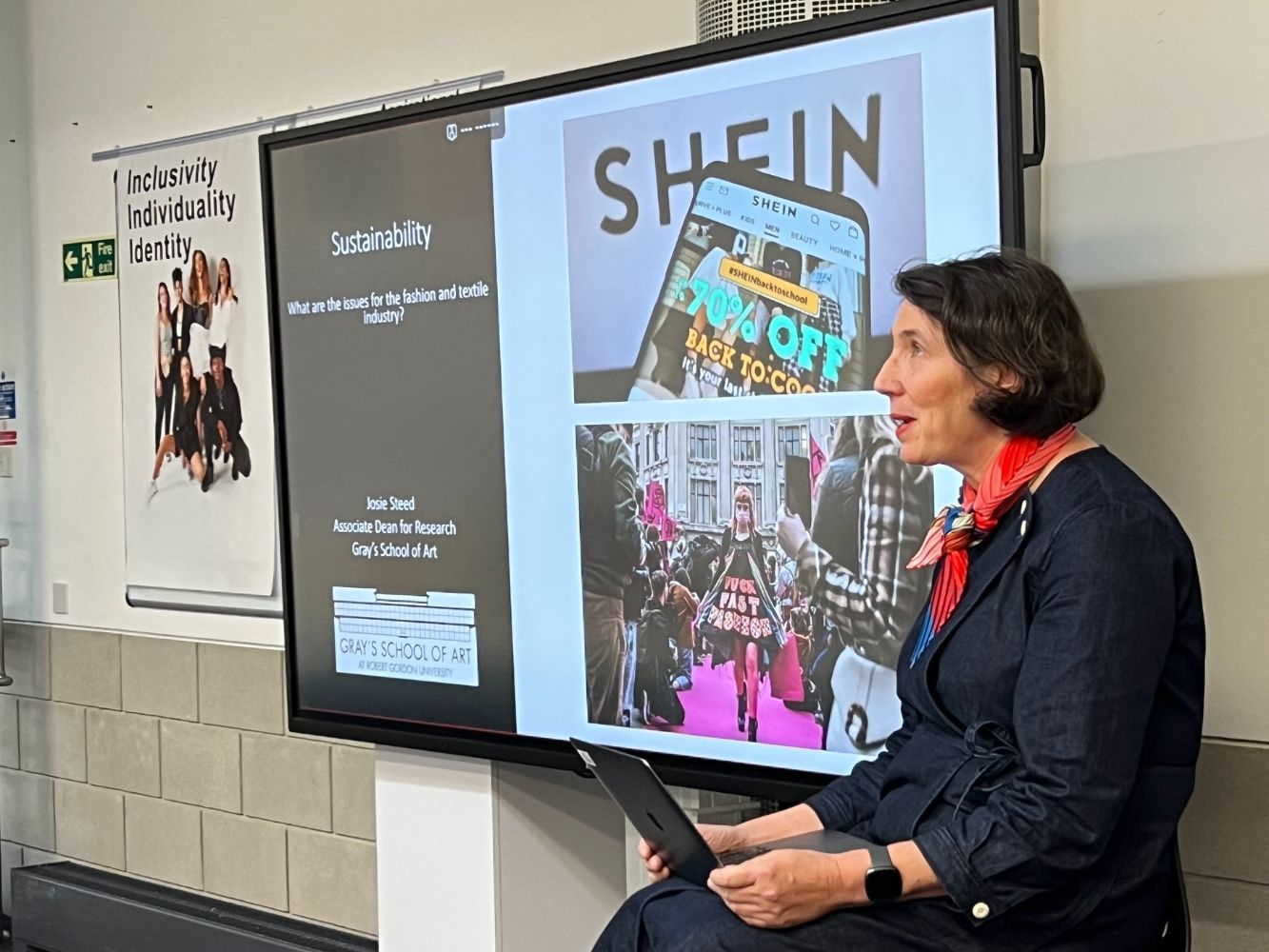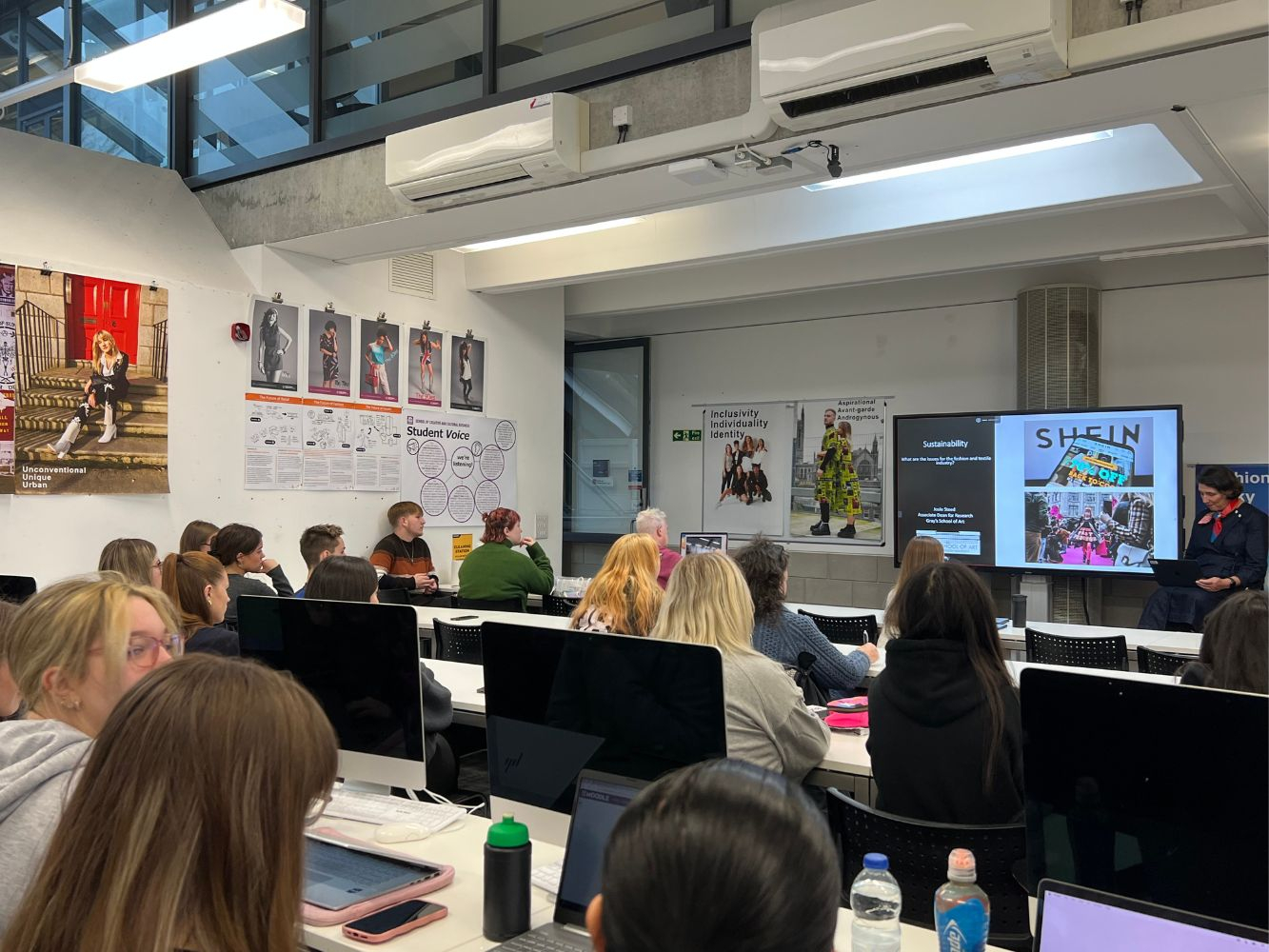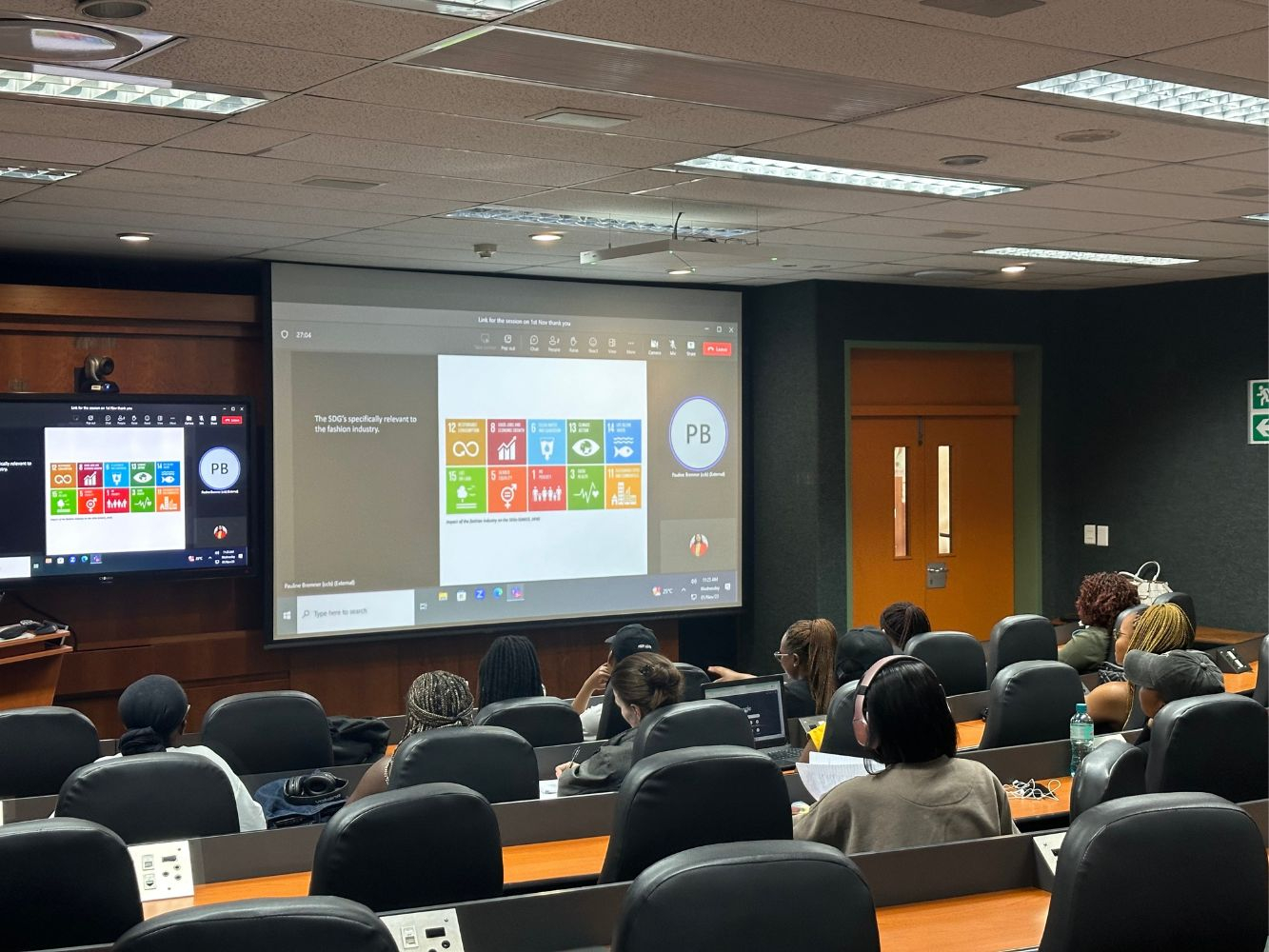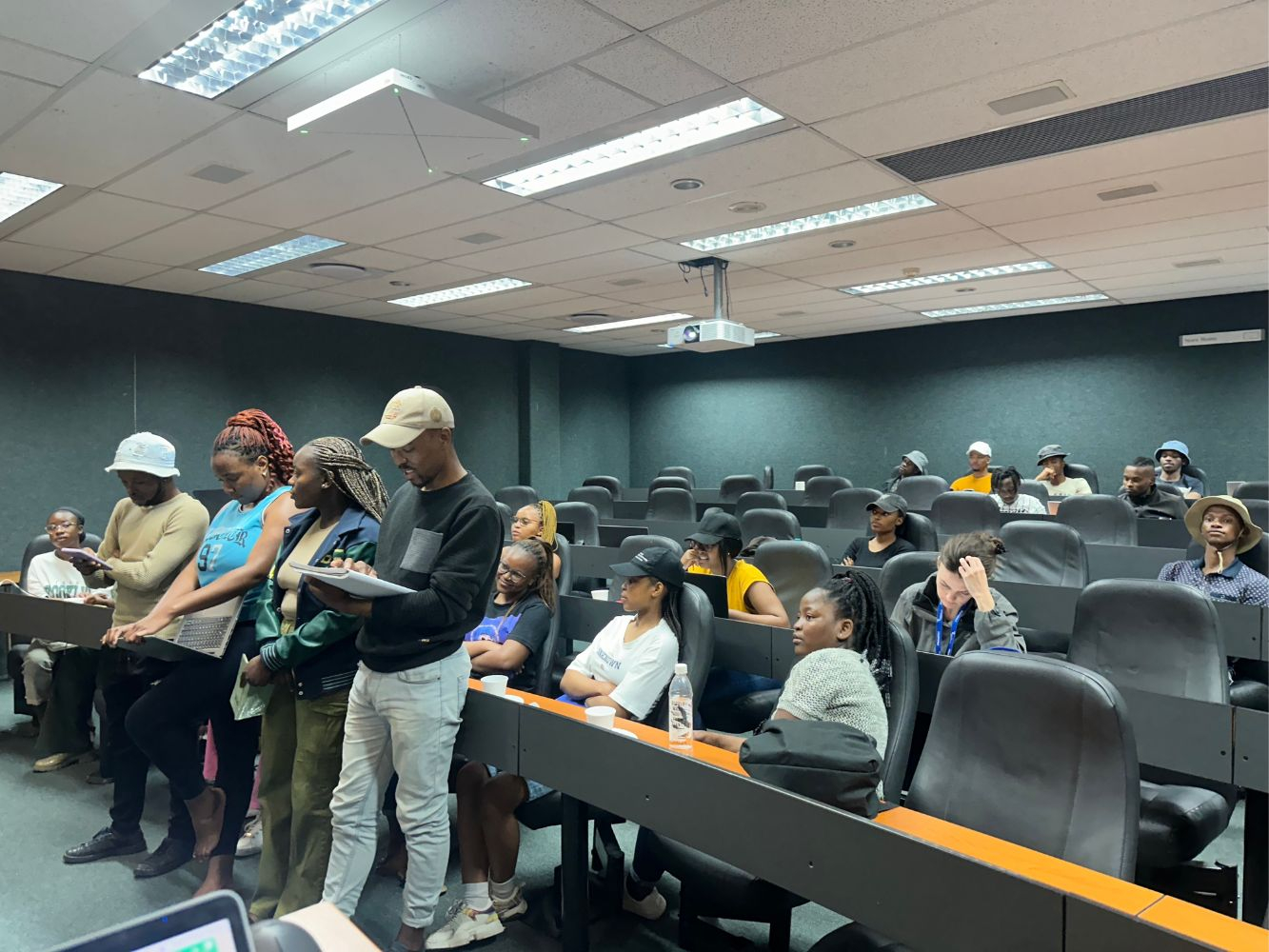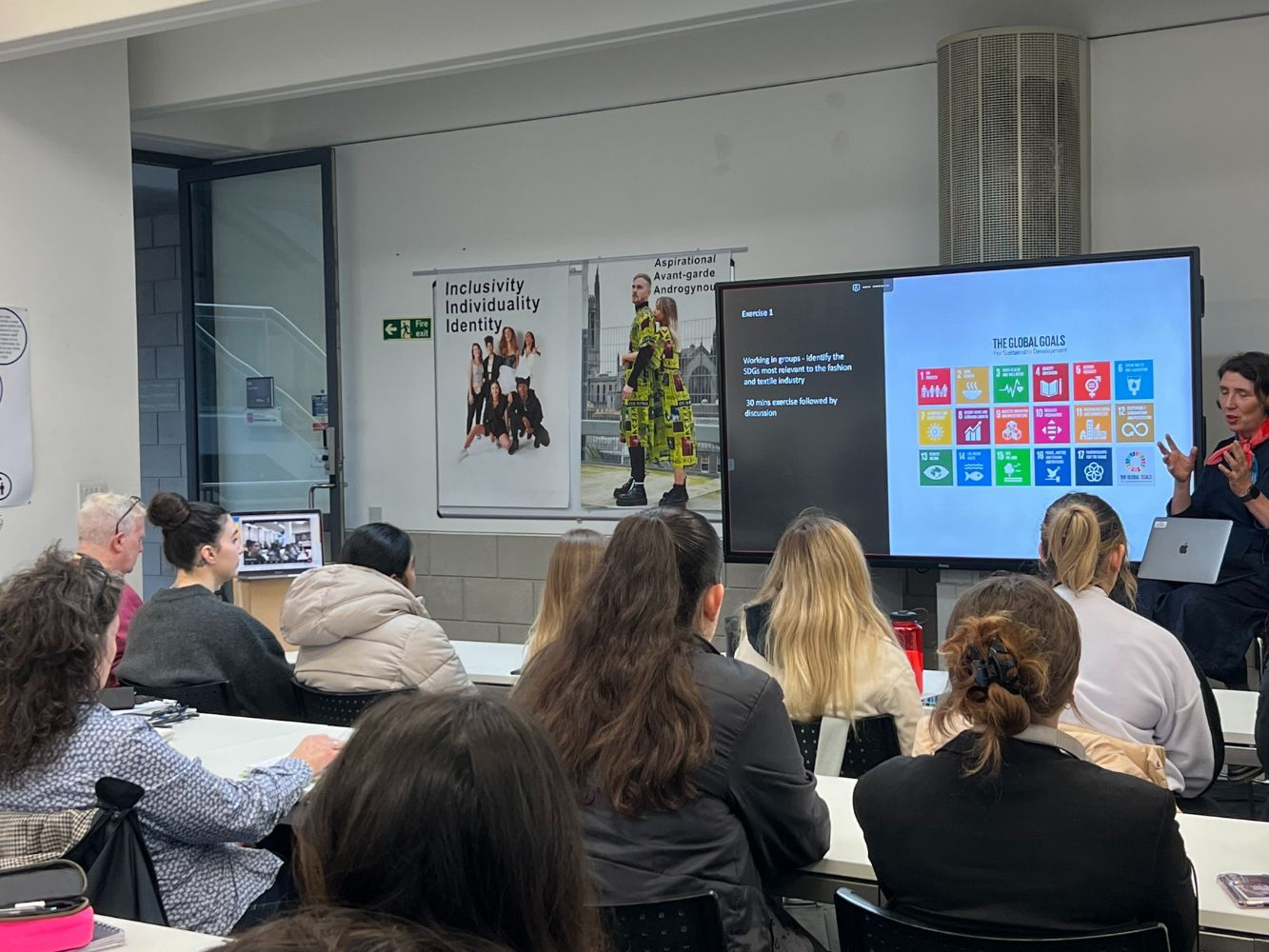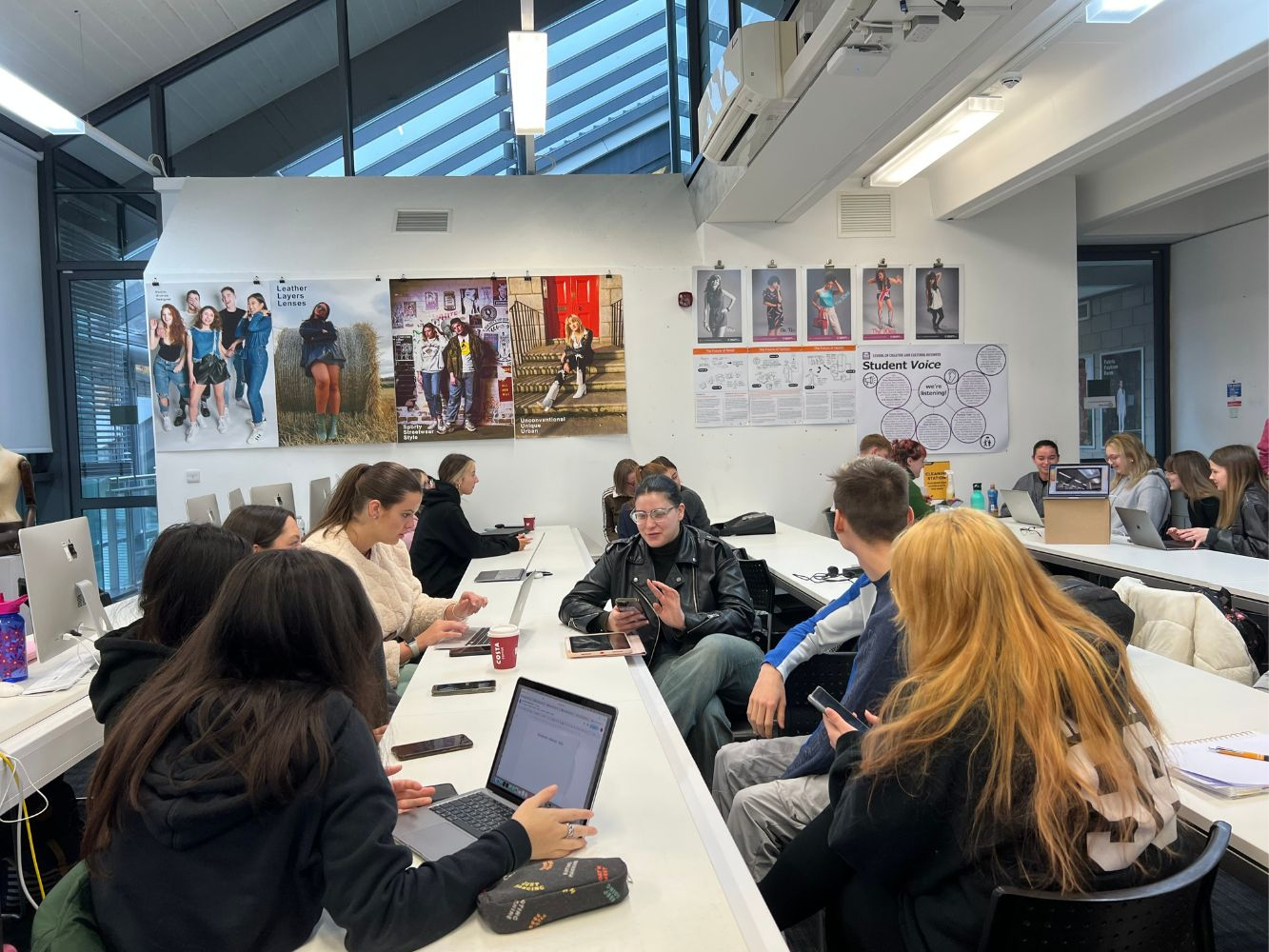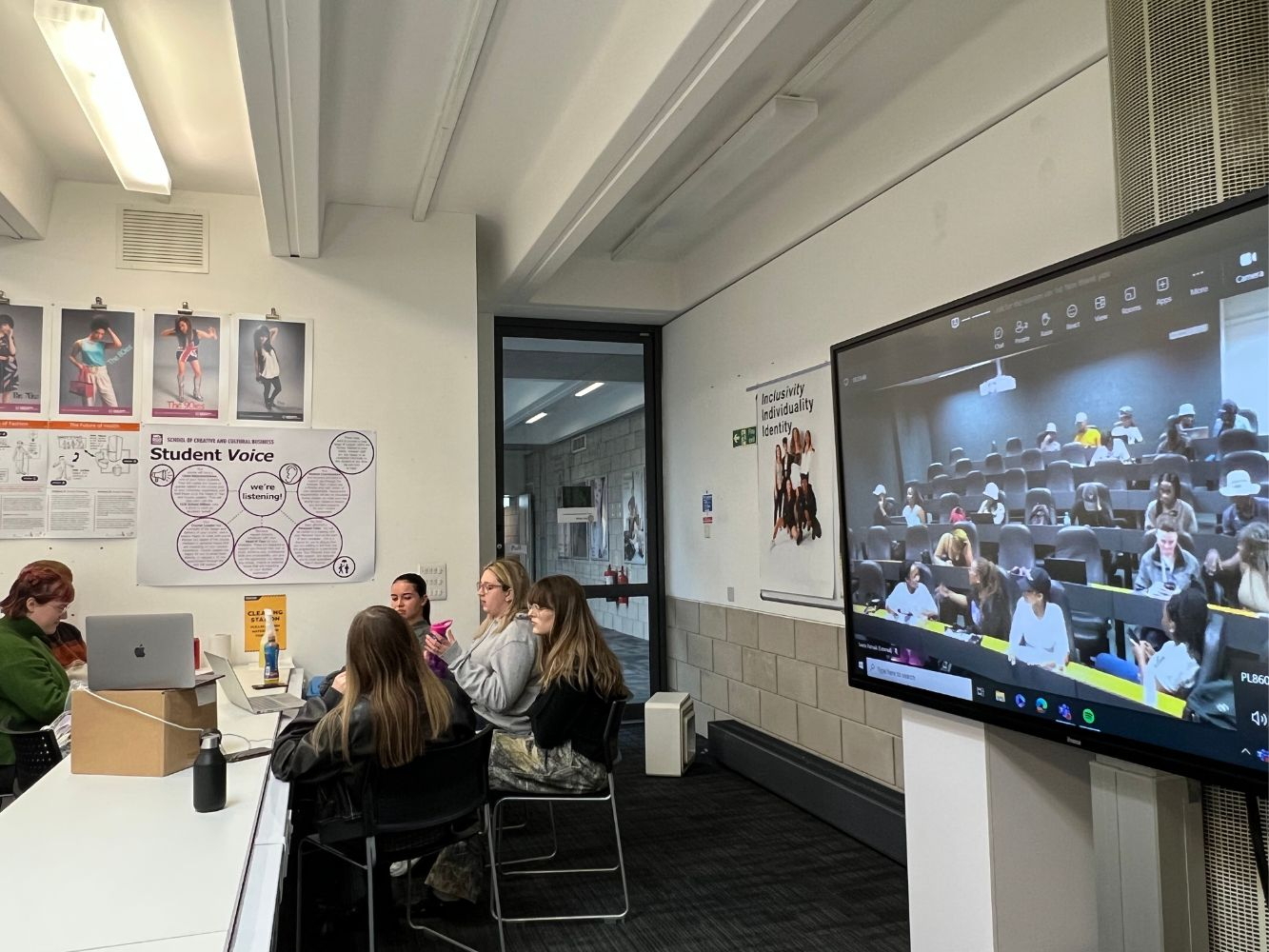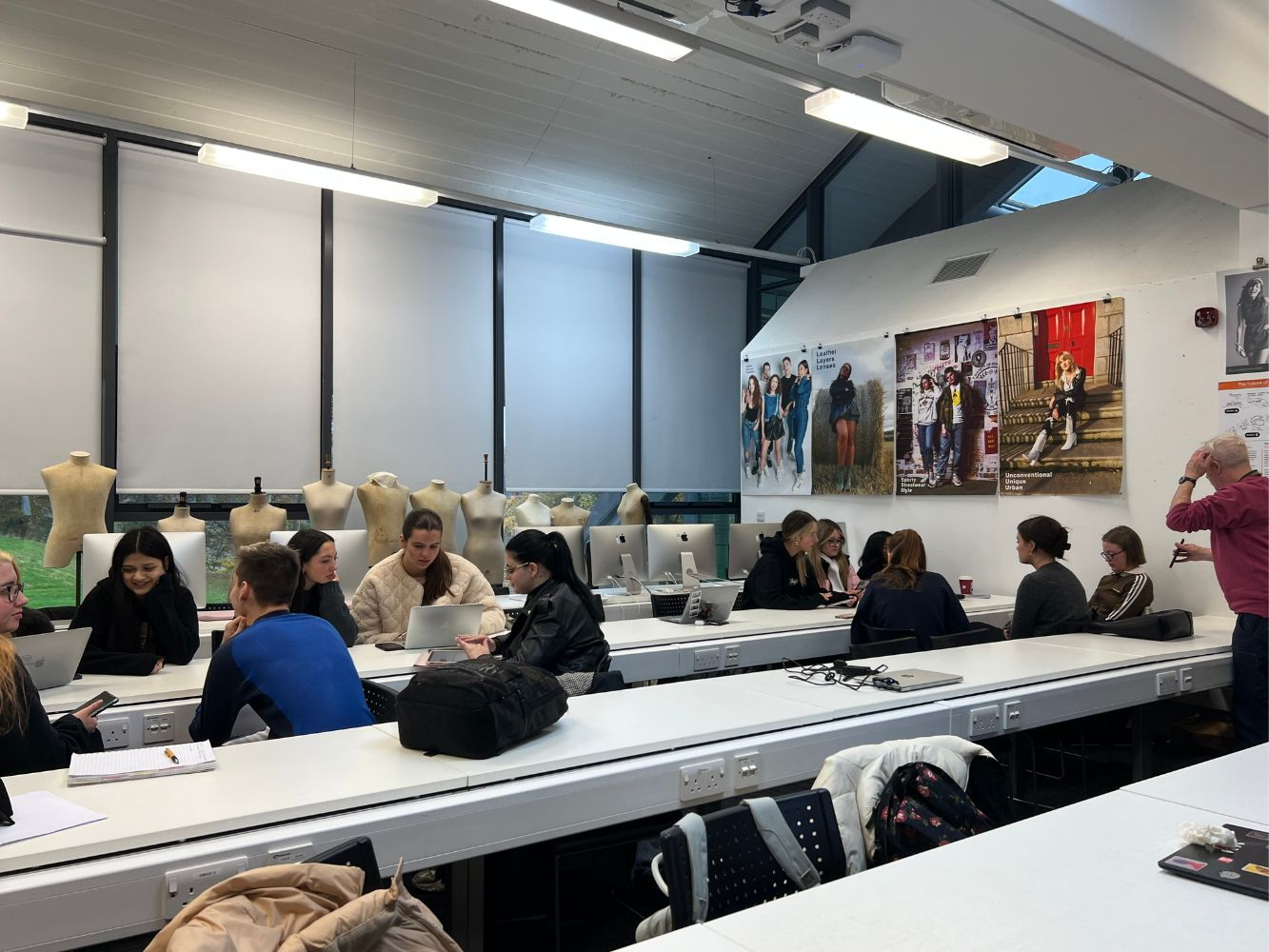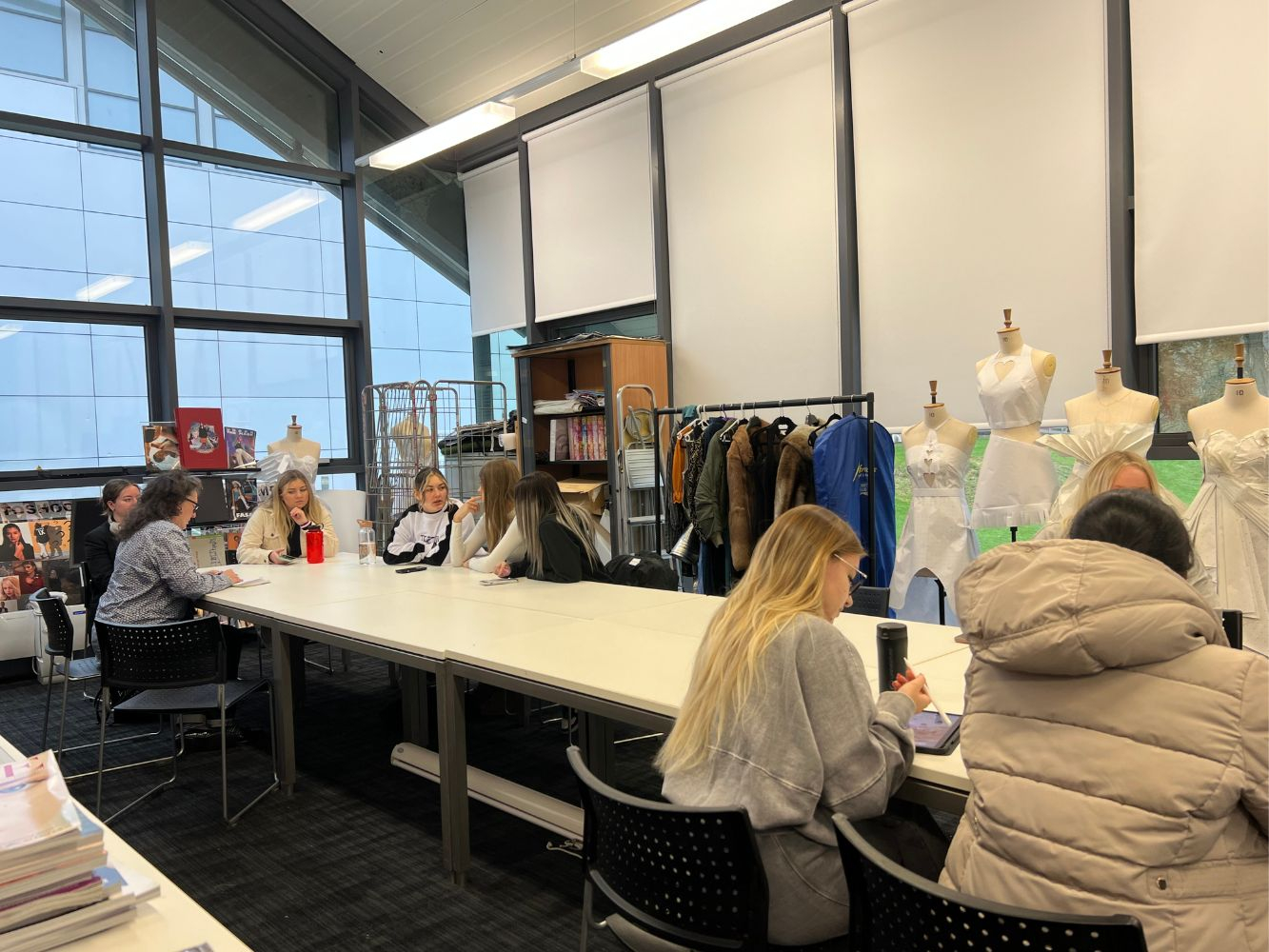Gray's and CCB students tackle sustainability in the fashion industry at interdisciplinary workshop
Academics from Gray’s and CCB have recently hosted a workshop for Stage 2 Fashion Management (CCB) and Stage 2 Fashion Textiles (Gray’s) students to look at sustainability in the fashion industry and how to tackle some of the Sustainability Development Goals set out by the United Nations.
With our new RGUplus offering for students, embedding sustainability within the curriculum has been a big priority for staff across the University. By ensuring that sustainability is integrated within each of our courses, students can be ready to take on challenges beyond graduation to advocate for sustainable practices in their field.
This is with this in mind that School of Creative and Cultural Business (CCB) and Gray’s School of Art colleagues decided to put together an interdisciplinary workshop on Wednesday 1st November to introduce their students to the Sustainable Development Goals (SDGs) and how these can relate to the fashion industry.
Alongside students from the Fashion Management and Fashion Textiles courses at RGU, the workshop was streamed on Teams to students from Cape Peninsula University of Technology. Josie Steed, Associate Dean for Research at Gray’s, shares why this workshop is an important activity for students and the University:
“There are two things actually. One is the importance of sustainability and how we embed that within our curriculum and making sure that our students have much more awareness after they graduate to be able to lead in that space and bring about changes to the way we currently operate in the fashion industry.
“The other important aspect is that we brought together groups of students from two different schools, both involved in the fashion industry but looking at it from a different perspective. The answers needed to tackle sustainability problems are very complicated and we can’t do it on our own, so thinking about it in an interdisciplinary way is very important.
“In many ways we should bring sociologists in as well to look at it from a consumer perspective. Maybe that’s what we will do next year, make it even wider. We need people from a wide range of sectors to even begin to solve some of these issues.”
The session started with an insightful presentation from Josie, where she introduced the different Sustainable Development Goals and which ones are particularly relevant for the fashion industry. She also highlighted shocking graphics around fast fashion and engaged the audience to start thinking about their own shopping behaviours. She tells us more about what she wanted students to take away from her presentation:
“We hoped that they would get a much deeper insight into the challenges of the fashion and textile industry, but more self-awareness as well. This workshop can make students think about their own actions and ask themselves ‘Where do my clothes come from? Where do I shop and why do I shop there? Can I make any changes’?”
After the presentation, students gathered in small groups to brainstorm about which SDGs they thought were the most important to tackle in their industry, and how they would go about doing so. The groups were supervised and supported by an enthusiastic team of academics, including Regan Kyle, CCB Lecturer, and Charles Hackett, Gray’s Lecturer, as well as PhD student Fi Loveday.
Regan and Fi are no strangers to thinking outside the box when it comes to solving sustainability issues within the fashion industry. With her PhD, Regan is looking at how digital fashion could replace fast fashion in a world where more and more of us exist online, which will continue to be the case with Meta having recently introduced the possibility of living through avatar versions of ourselves within virtual reality. Meanwhile, Fi’s research – which is part of the Augmented Fashion Project – focuses on immersive technologies and how they could be used to support small-scale heritage craft.
With this experienced team, students had a lot to learn and had time to reflect on the benefits of the session and what their main takeaway was:
- “Learning about the SDGs was very interesting. For most of us, this was the first time we had heard of them despite being aware of sustainability problems.”
- “It will encourage us to be more conscious of what we’re buying, even considering elements outside of our field, like shipping methods.”
- “There were really striking statistics, such as the enormous amount of clothes that get thrown away despite efforts to recycle or donate.”
- “It was good because we are all aware of sustainability problems on some level, but we also have misconceptions. For example, we were surprised by the fact that donating to charity shops might not be a perfect solution as many items do end up in landfills in the end.”
- “The workshop today will help us apply sustainability to our studio work.”
The workshop is not only beneficial for students’ careers once they enter the world of work, but also prepares them for future projects they will be undertaking at university. Regan tells us more:
“I think at the moment this stage of learning is very introductory, it’s giving an idea and flavour of what’s happening in terms of the Sustainable Development Goals in relation to fashion, which will help them in their studies later down the line. For example, our students in CCB will be doing a Sustainable Fashion Project in 4th year where they have to pick specific SDGs and analyse how certain retailers cope with tackling these.”
As for pushing these efforts forwards, there are still many opportunities to get students engaged with sustainability to prepare them for the future,as Josie shares:
“We are mapping out and connecting the SDGs to different courses and modules, making them much more visible and easily accessible for students.
“The hope is that as students progress through the different years and then graduate, they’ve got much more confidence in understanding the issues that they are going to have to tackle in the industry. This cohort might be working in fashion when we reach 2050, and we don’t know what that world is going to look like, so it is important to give them the tools to lead and teach others as well.”

